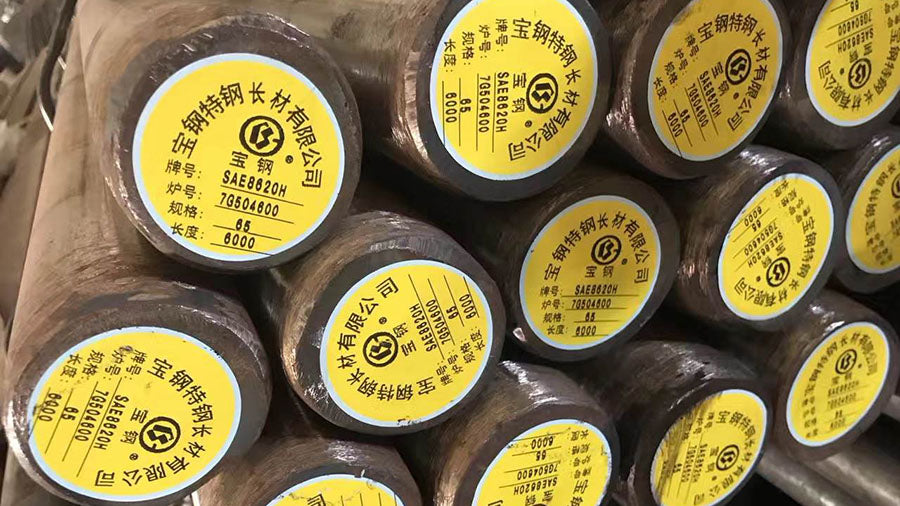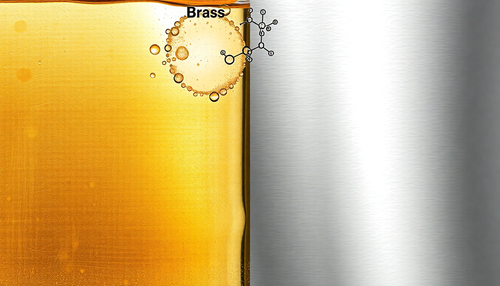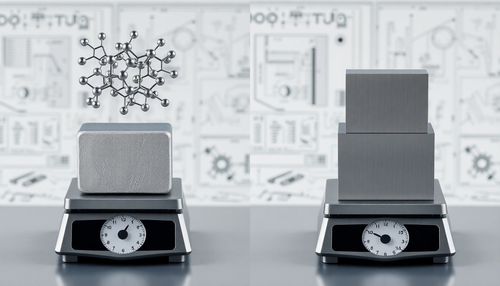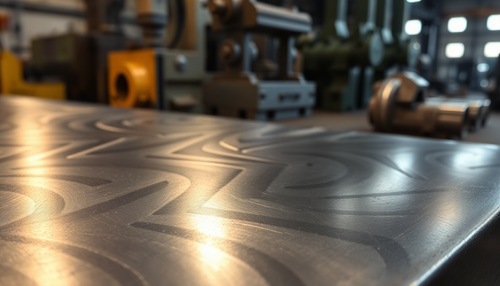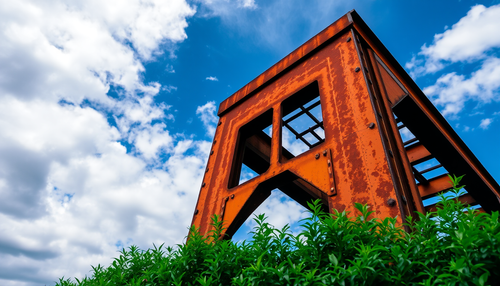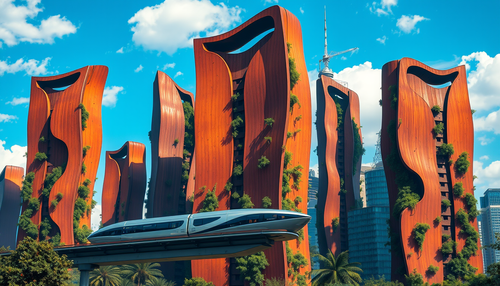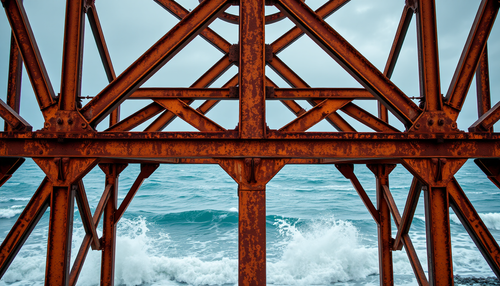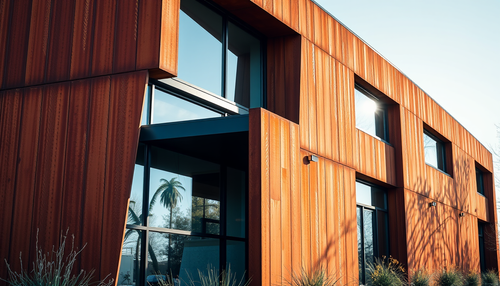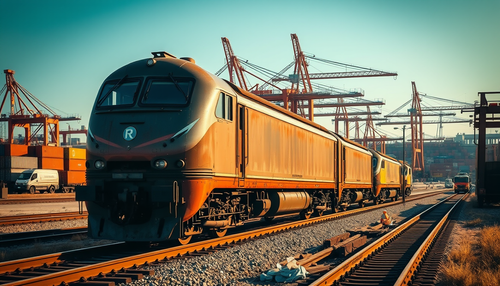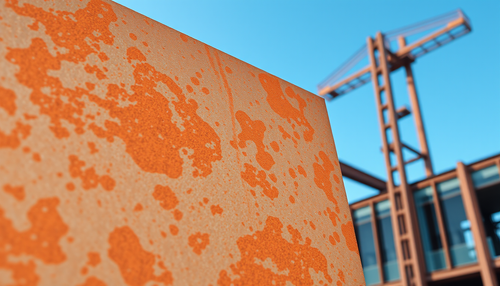
AISI SAE 8620 steel (UNS G86200)
AISI SAE 8620 steel is a low alloy material commonly used for carburizing, with excellent carburizing response, good hardenability for most section sizes, has many extensive applications due to its low cost, better machinability and availability.
Properties of SAE AISI 8620 steel
The tables below summarize the SAE AISI 8620 steel properties and specifications including chemical composition, mechanical properties, hardness, heat treatment, etc.
Chemical composition
The chemical composition of AISI SAE 8620 steel is listed in the table below.
| Chemical Composition SAE AISI 8620, % | ||||||||||||
| Standard | Steel Grade (UNS) | W | Yes | Mn | P, ≤ | S, ≤ | Cr | No | Mo | Cu, ≤ | Oh, ≤ | Al, ≤ |
| ASTM A322; ASTM A29/A29M |
8620 (UNS G86200) | 0.18-0.23 | 0.15-0.35 | 0.70-0.90 | 0.035 | 0.040 | 0.40-0.60 | 0.40-0.70 | 0.15-0.25 | – | – | – |
| ASTM A534 | 8620H | 0.17-0.23 | 0.15-0.35 | 0.60-0.95 | 0.025 | 0.015 | 0.35-0.65 | 0.35-0.75 | 0.15-0.25 | 0.3 | 0.002 | 0.05 |
Mechanical properties
The mechanical properties of AISI SAE 8620 material are listed in the following tables, including yield strength (yield stress), tensile strength, impact strength and hardness, etc.
Grades:
- 1 MPa = 1 N/mm2
- 1 GPa = 1kN/mm2
| Mechanical Properties of 8620 Alloy Steel | |||||||
| Steel (UNS) | Tensile strength, Mpa (ksi), ≥ | Yield strength, Mpa (ksi), ≥ | Elongation by 50 mm (2 in.), %, ≥ | Reduction in area, %, ≥ | Hardness, HB | Impact resistance Izod, J (ft·lbf) | Condition or treatment |
| 8620 (UNS G86200) | 633 (92) | 357 (52) | 26.3 | 59.7 | 183 | 100 (74) | Normalized to 915°C (1675°F) |
| 536 (78) | 385 (56) | 31.3 | 62.1 | 149 | 115 (83) | Annealed at 870°C (1600°F) | |
Machinability index: 65% for cold finished bars based on 1212 steel machinability index of 100%, microstructure mainly composed of acicular pearlite and bainite. Brinell hardness: 179-235 HB.
Toughness
| Effect of Mass on Hardness of Standardized 8620 Alloy Steel | |||
| Note (UNS) | Normalization temperature, °C (°F) | Bar diameter, mm (in.) | Hardness, HB |
| 8620 (UNS G86200) | 915 (1675) | 13 (1/2) | 197 |
| 25 (1) | 183 | ||
| 50 (2) | 179 | ||
| 100(4) | 179 | ||
| Effect of mass on oil-quenched hardness (HRC) of 8620 low-alloy steel of various diameters. | ||||||||||||
| turns on | 13 mm (0.5 in.) | 25 mm (1 in.) | 50 mm (2 in.) | 100 mm (4 in.) | ||||||||
| Surface | 1/2 radius | center | Surface | 1/2 radius | center | Surface | 1/2 radius | center | Surface | 1/2 radius | center | |
| 8620, 8620H | 43 | 43 | 43 | 29 | 27 | 25 | 23 | 22 | 97 HRB | 22 | 95 HRB | 93 HRB |
Alloy 8620 heat treatment
| Approximate processing temperatures for 8620 alloy steels | |||||
| Note | Transformation temperature when heating at 28 °C/h (50 °F/h) | Cooling transformation temperature at 28 °C/h (50 °F/h) | |||
| 8620 (UNS G86200) | Ac1 | Ac3 | Ar3 | Ar1 | IN |
| 730 (1350) | 830 (1525) | 770 (1415) | 660 (1220) | 395 (745) | |
| Hardening Temperatures for Low-Carbon, Low-Alloy 8620 Steel After Carburizing | |||
| SAE steels | Treatment | Temperature, °C (°F) | Observation |
| 8620, 8615, 8617, 8622, 8625, 8720 | Carburization | 900-955 (1650-1750) | |
| Reheat | 800-830 (1475-1525) | When only the hardness of the case is fundamental | |
| 830-855 (1525-1575) | When greater core hardness is desired | ||
| Temperament | 120-175 (250-350) | Optional (for partial stress relief and improved crack resistance in grinding operations.) | |
| Cooling medium: Oil | |||
| Austenitizing Temperatures and Quenching Media for Direct Hardening of 8620 Low Alloy Steel | |||
| AISI | Austenitizing temperature, °C (°F) | Quenching medium | Temper, °C (°F) |
| 8620 (UNS G86200) | 845 (1550) | Lubricate or Austenitize at 830°C (1525°F) for water quenching | 200-650 (390-1200) |
| Complete Annealing Cycles for Carburizing Alloy Steel 8620 | |||||
| AISI | Conventional process | Isothermal process | |||
| Annealing temperature, °C (°F), Hold for 45 min | Cooling | Annealing temperature, °C (°F) | Isothermal temperature, °C (°F) | Wait, h | |
| 8620 | 870 (1600) | Fresh Oven | 885 (1625) | 660 (1220) | 4 |
| 8620 material generally does not require complete annealing. Normalizing or isothermal treatment will provide the best structures for machining. | |||||
| Important carburizing parameters for some grades of 8620 gear steel | ||
| AISI | Heat treatment | Temperature, °C (°F) |
| 8620 | Normalizing | 870-930 (1600-1700) |
| girdling | 860 (1575) | |
| Carburization | 930 (1700) | |
| Reheat | 775-840 (1425-1550) | |
| IN | 395 (745) | |
| Typical heat treatment for carburizing 8620 alloy steel | ||||
| AISI | Normalize | Carburizing temperature, °C (°F) | Cooling method | Quenching temperature, °C (°F) |
| 8620 steel | It should be at least as high as the carburizing temperature followed by air cooling | 900-925 (1650-1700) | Season in oil | 120-175 (250-350) |
| Observation: Carburizing: The usual practice is to reduce the carburizing temperature to approximately 845°C (1550°F) before quenching to minimize deformation and retain the austenite. Temperament: Optional. Tempering is generally used to relieve some of the stress and improve the crack resistance of the grinding operation. In some application cases, use a temperature higher than the indicated temperature. |
||||
| Typical Applications of 8620 Martempered Steel Parts in Salt | |||||
| Paper | Note | Maximum section thickness, mm (in.) | Weight, kg (lb) | martempering conditions | |
| Salt temperature, °C (°F) | Minimum time in salt, min | ||||
| Screw machine spindle | 8620 Carburized | 10.2 (0.40) | 6.35 (14.0) | 205 (400) | 3 |
| Screw machine sprocket | 38.1 (1.50) | 9.07 (20.0) | 205 (400) | 3 | |
| Typical martempering applications of 8620 steel parts in oil | |||||||||
| Paper | Note | Maximum section thickness, mm (in.) | Outer diameter, mm (in.) | Weight, kg (lb) | Carburizing temperature, °C (°F) | Case depth, μm (0.001 in.) | Quenching temperature, °C (°F) | Tempering oil temperature, time in oil ≥5 min. | Surface hardness, HRC |
| Splined shaft | 8620 steel | 50.8 (2) | 50.8 (2) | 5.1 (11.25) | 925 (1700) | 1525-1725 (60-68) | 925 (1700) | 165 | 58-62 |
| steel 8625 | 44.4 (1.75) | 44.4 (1.75) | 2.0 (4.5) | 190 | 58-62 | ||||
| 65.0 (2,559) | 65.0 (2,559) | 6.8 (15) | 165 | 58-62 | |||||
| Typical liquid carburizing applications in cyanide baths | ||||||||
| Material | Paper | Weight, kg (lb) | Case depth, mm (in.) | Temperature, °C (°F) | Time, h | To switch off | Subsequent treatment | Rockwell hardness, HRC |
| 8620 steel | Rolling races | 0.9-36 (2-80) | 2.3 (0.090) | 925 (1700) | 14 | B.C | ② | 61-64 |
| Bearing Rollers | 0.20 (0.5) | 2.3 (0.090) | 925 (1700) | 14 | B.C | ② | 61-64 | |
| Coupling | 0.03 (0.06) | 0.25-0.4 (0.010-0.015) | 845 (1550) | two | Oil | ① | Hard file | |
| Crankshaft | 0.9 (2) | 1.0 (0.040) | 915 (1675) | 6.5 | B.C | ③ | 60-63 | |
| Gear | 0.34 (0.75) | 1.0 (0.040) | 915 (1675) | 6 | B.C | ② | 60-63 | |
| 0.03 (0.06) | 0.075-0.13 (0.003-0.005) | 845 (1550) | 0.5 | Oil | ① | Hard file | ||
| Intermediate shaft | 0.45 (1) | 0.75 (0.030) | 915 (1675) | 5 | ④ | – | 58-63 | |
| Chick | 4.5-86 (10-190) | 1.5 (0.060) | 925 (1700) | 12 | ④ | – | 58-63 | |
| Piston | 0.20 (0.5) | 1.3 (0.050) | 915 (1675) | 8 | B.C | ② | 60-63 | |
| Unblocker | 0.45-82 (1-180) | 1.3 (0.050) | 915 (1675) | 8 | ④ | – | 58-63 | |
| To knock | 2.3-23 (5-50) | 1.1 (0.045) | 915 (1675) | 7 | ④ | – | 58-63 | |
| Reel | 0.45-54 (1-120) | 1.3 (0.050) | 925 (1700) | 7 | ④ | – | 58-63 | |
| Impulse cup | 0.20 (0.5) | 1.1 (0.045) | 915 (1675) | 7 | ④ | – | 58-63 | |
| thrust plate | 5.4 (12) | 2.3 (0.090) | 925 (1700) | 14 | B.C | ② | 60-64 | |
| Universal socket | 1.8 (4) | 1.5 (0.060) | 915 (1675) | 10 | B.C | ② | 58-63 | |
| Valve | 0.01 (0.03) | 0.4-0.5 (0.015-0.020) | 845 (1550) | 4 | Oil | ⑤ | ≥60 | |
| valve seat | 0.20 (0.5) | 1.1 (0.045) | 915 (1675) | 7 | B.C | ② | 60-63 | |
| Wear plate | 0.45-3.6 (1-8) | 1.3 (0.050) | 915 (1675) | 7 | B.C | ② | 60-63 | |
Grades:
|
||||||||
| Typical liquid carburizing applications in cyanide-free baths | ||||||||
| turns on | Paper | Weight, kg (lb) | Case depth, mm (in.) | Temperature, °C (°F) | Time, h | To switch off | Subsequent treatment | Rockwell hardness, HRC |
| 4620, 8620 steel | Screw machine spindles | 0.8 (1.8) | 0.89 (0.035) | Preheat to 840°C (1545°F); carburete at 920°C (1690°F) | 6 | Molten salt, 205°C (400°F) | – | 60-63 |
Carburization
A common method of carburizing AISI SAE 8620 steel is to heat to 925 °C (1700 °F) at a potential of 0.9% C in a prepared atmosphere containing carbon, hold for about 4 hours (to reach a depth of 1 .3 mm [0.050 in]) and reduce the temperature to 845 °C (1555 °F). The carbon potential is close to eutectoid, maintaining a 1 h diffusion period, quenching in oil and then tempering at 150°C (300°F). If loss of hardness at higher tempering temperatures can be tolerated, a slightly higher tempering temperature can be used to increase toughness.
Carbonitridation
A typical carbonitriding process of SAE AISI 8620 material involves heating to 845 °C (1555 °F) with 10% (volume) anhydrous ammonia in a carburizing atmosphere for 45 minutes and then quenching in oil to produce a deep 0.305 mm (0.012 in) shell. Time and temperature can be adjusted to change the depth of the box. The temperature is usually between 790 and 900 °C (1455 to 1650 °F). After carbonitriding, tempering at 150 to 260 °C (300 to 500 °F) is recommended.
Forms
AISI SAE 8620 steel applications include: Differentials (automotive and off-road), drives (industrial, tractor accessories), engines, equipment (off-road, steel or paper, mining), starters. Gears, steering mechanism, gearbox and transmission components for automobiles.
Carbureted gears, pinions, shafts, differential rings, steering worms, engine crankshafts, splined shafts, chains, pneumatic drill parts, chuck jaws, oil well bits and reamer cutters, piston pins, pneumatic chucks , heavy-duty screws, fasteners and hand tools.
Equivalent material SAE AISI 8620
SAE AISI 8620 material equivalent to European standard EN (Germany DIN, British BSI, French NF…), ISO, Japanese JIS and Chinese GB (for reference).
| Equivalent material SAE AISI 8620 | |||||||||
| USA | China | Japan | European Union | ISO | |||||
| Standard | Note (UNS) | Standard | Note (UNS) | Standard | Note | Standard | Steel name (steel number) | Standard | Note |
| AISI-SAE; ASTM A322; ASTM A29/A29M |
8620 (UNS G86200) | GB/T 3077 | 20CrNiMo (A50202) | JIS G4053 | SNCM220 | ||||
Related Material: Steel 5160, Steel SAE AISI 1080, Steel AISI 1018, Steel AISI 1045, Steel AISI 1020, Steel SAE AISI 52100

